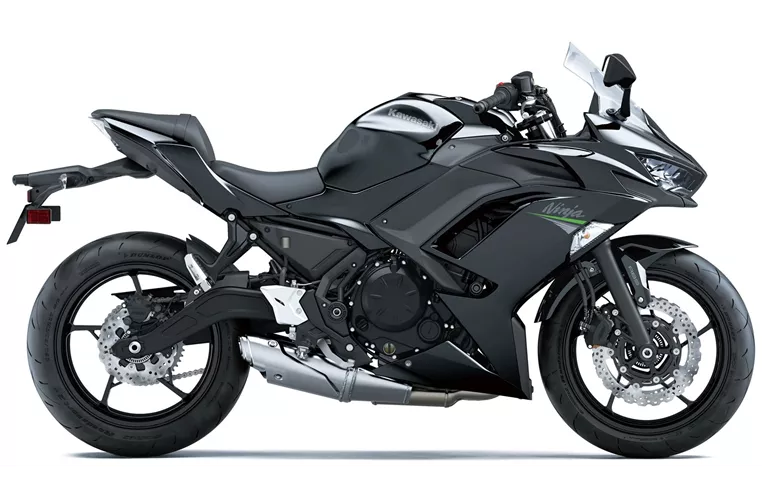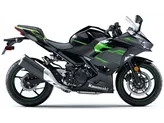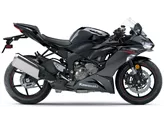Triumph Daytona 675 R 2013 vs. Kawasaki Ninja 650 2020

Triumph Daytona 675 R 2013
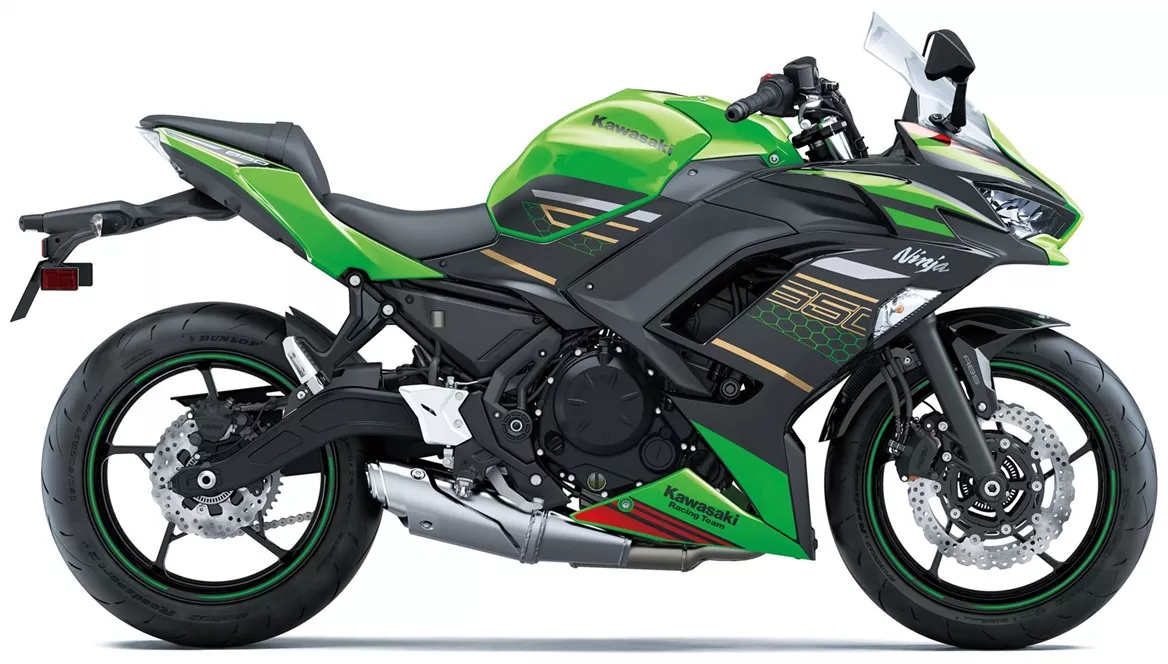
Kawasaki Ninja 650 2020
Overview - Triumph Daytona 675 R 2013 vs Kawasaki Ninja 650 2020
The Triumph Daytona 675 R 2013 and the Kawasaki Ninja 650 2020 are both supersport motorcycles that offer different features and specifications.
In terms of engine and drivetrain, the Triumph Daytona 675 R 2013 has an inline three-cylinder engine with a displacement of 675cc. It produces 128 horsepower and 74 Nm of torque. The Kawasaki Ninja 650 2020, on the other hand, has an inline two-cylinder engine with a displacement of 649cc. It produces 68.2 horsepower and 65.7 Nm of torque. The Triumph Daytona has a higher power output and torque compared to the Kawasaki Ninja.
Both motorcycles have DOHC valve systems and four valves per cylinder, ensuring efficient airflow and combustion. The Triumph Daytona has a higher compression ratio of 12.6, indicating better performance potential. However, the Kawasaki Ninja has a larger bore and stroke, which may contribute to smoother power delivery.
In terms of suspension, the Triumph Daytona 675 R 2013 features an upside-down telescopic fork at the front and adjustable compression and rebound at the rear. The Kawasaki Ninja 650 2020 has a telescopic fork at the front and preload adjustment at the rear. The Triumph Daytona offers more advanced suspension features, allowing for better customization and fine-tuning.

Triumph Daytona 675 R 2013
Both motorcycles have different frame types, with the Triumph Daytona 675 R 2013 featuring a twin-tube frame and the Kawasaki Ninja 650 2020 featuring a tubular frame. The choice of frame design can affect the overall rigidity and handling characteristics of the motorcycle.
In terms of brakes, the Triumph Daytona 675 R 2013 has radial monoblock brakes at the front, which provide excellent stopping power and control. The Kawasaki Ninja 650 2020 has petal brakes at the front, which also offer good braking performance. Both motorcycles have ABS, ensuring enhanced safety during braking.
The dimensions and weights of the motorcycles differ slightly. The Triumph Daytona 675 R 2013 has a wheelbase of 1375mm, a seat height of 830mm, and a kerb weight of 184kg. The Kawasaki Ninja 650 2020 has a wheelbase of 1410mm, a seat height of 790mm, and a kerb weight of 193kg. The Kawasaki Ninja has a slightly longer wheelbase and a lower seat height, which may contribute to better stability and easier maneuverability for some riders.
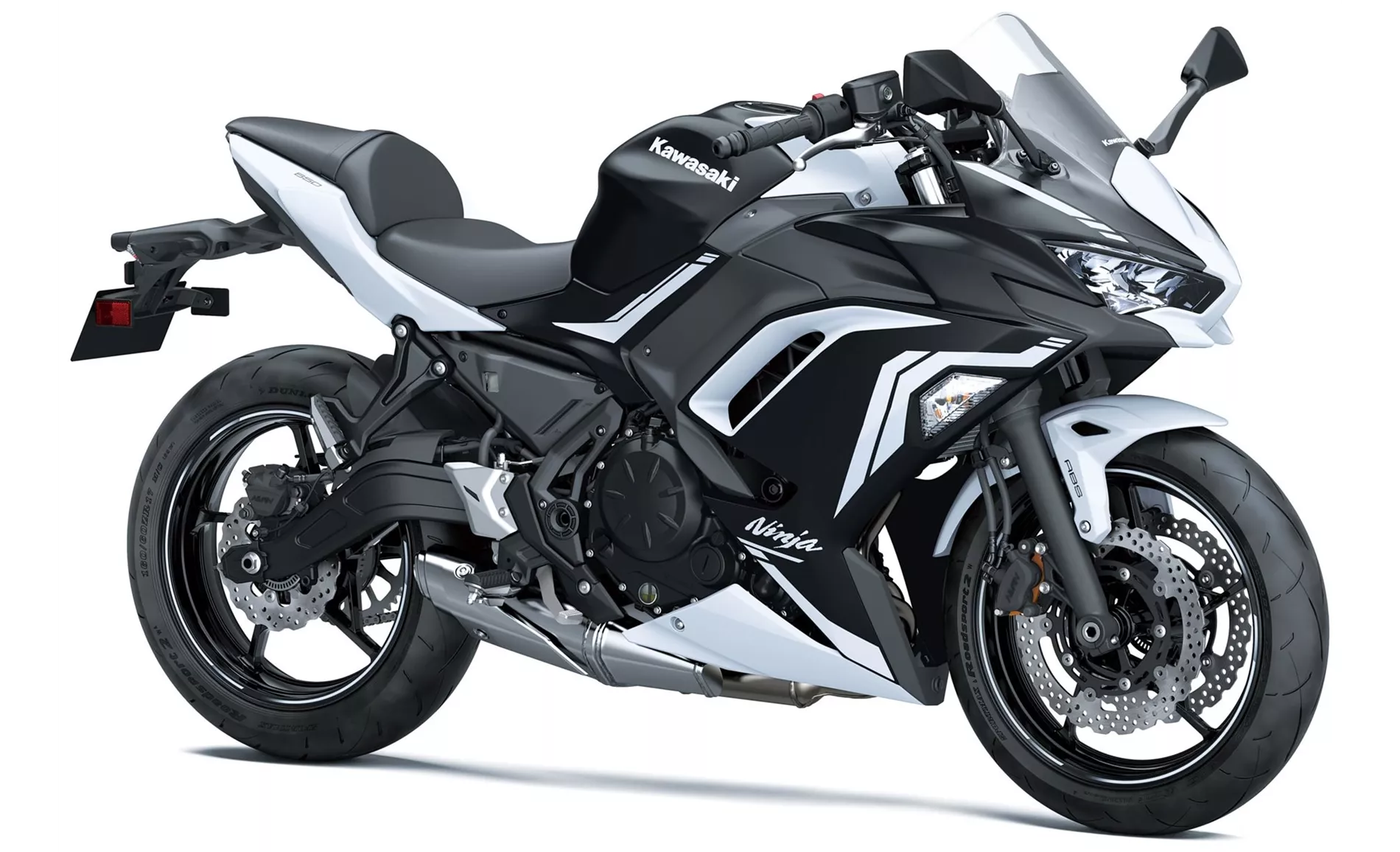
Kawasaki Ninja 650 2020
In terms of fuel tank capacity, the Triumph Daytona 675 R 2013 has a capacity of 17.4 liters, while the Kawasaki Ninja 650 2020 has a capacity of 15 liters. The larger fuel tank of the Triumph Daytona may provide a longer range between refueling stops.
In terms of strengths, the Triumph Daytona 675 R 2013 has a dream chassis, extremely solid brakes, a strong engine, a reprogrammed automatic gearshift, and disengageable ABS. The Kawasaki Ninja 650 2020 has a powerful two-cylinder engine, a comfortable seat suitable for touring, compact dimensions, a beginner-friendly seat height, a stable chassis, a TFT display with connectivity, and a sporty look.
However, the Triumph Daytona 675 R 2013 is noted for its high price, which may be a drawback for some potential buyers. On the other hand, the Kawasaki Ninja 650 2020 may not be suitable for taller riders due to its overall dainty size. It also has some limitations for touring with two people and has been described as having a front brake pressure point.
In conclusion, the Triumph Daytona 675 R 2013 and the Kawasaki Ninja 650 2020 are both capable supersport motorcycles with their own unique features and strengths. The Triumph Daytona offers a more powerful engine and advanced suspension, while the Kawasaki Ninja provides a comfortable seat and a sporty look. Ultimately, the choice between the two will depend on the rider's preferences and priorities.
Technical Specifications Triumph Daytona 675 R 2013 compared to Kawasaki Ninja 650 2020
Pros and Cons in comparison
Pros and Cons in comparison
Triumph Daytona 675 R 2013
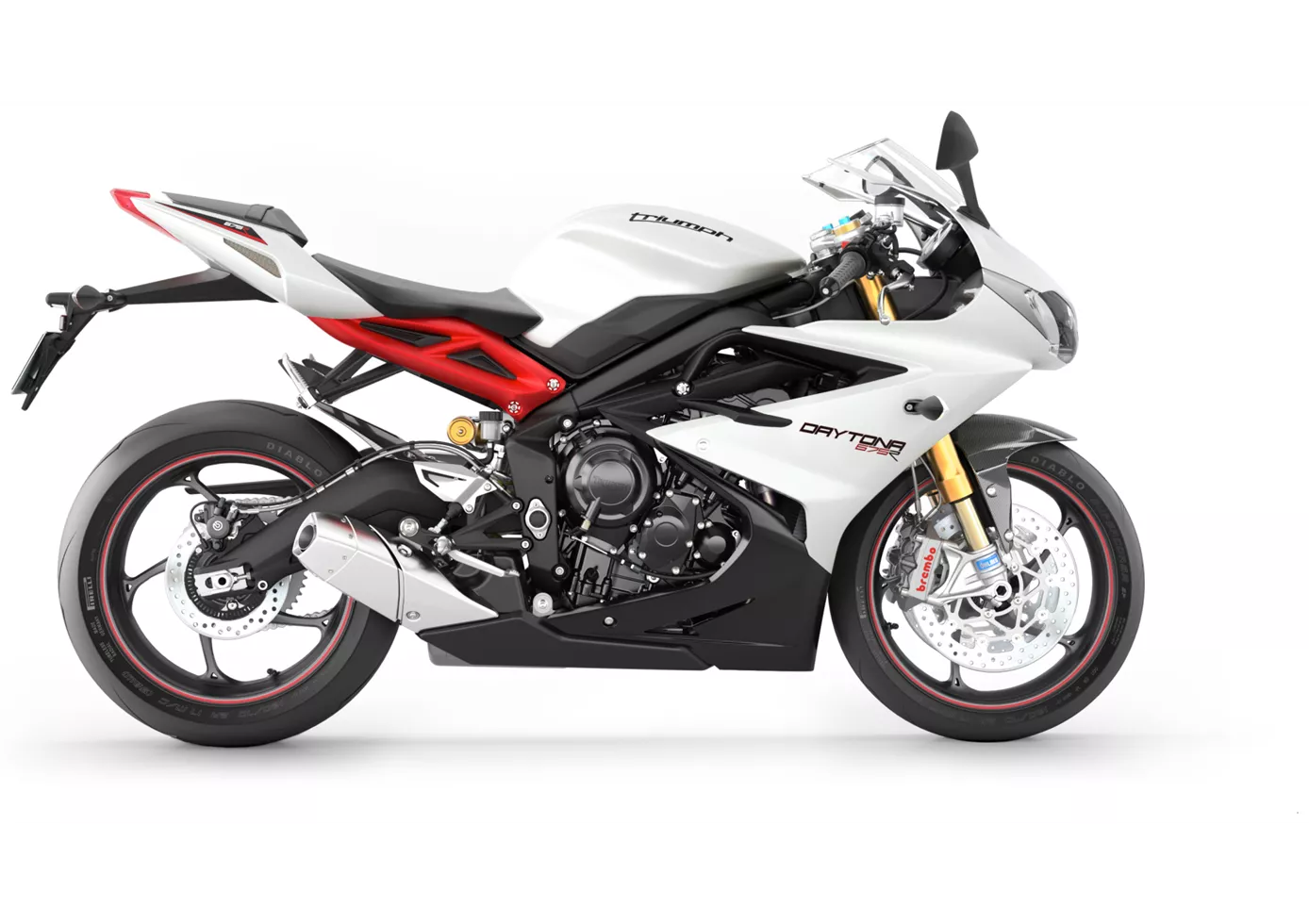
Mis à part le fait que la Triumph engendre beaucoup de frais en cas de correction involontaire de la ligne jusqu'à la position 0 degré, elle apporte tout ce dont on a besoin sur le ring.
Kawasaki Ninja 650 2020
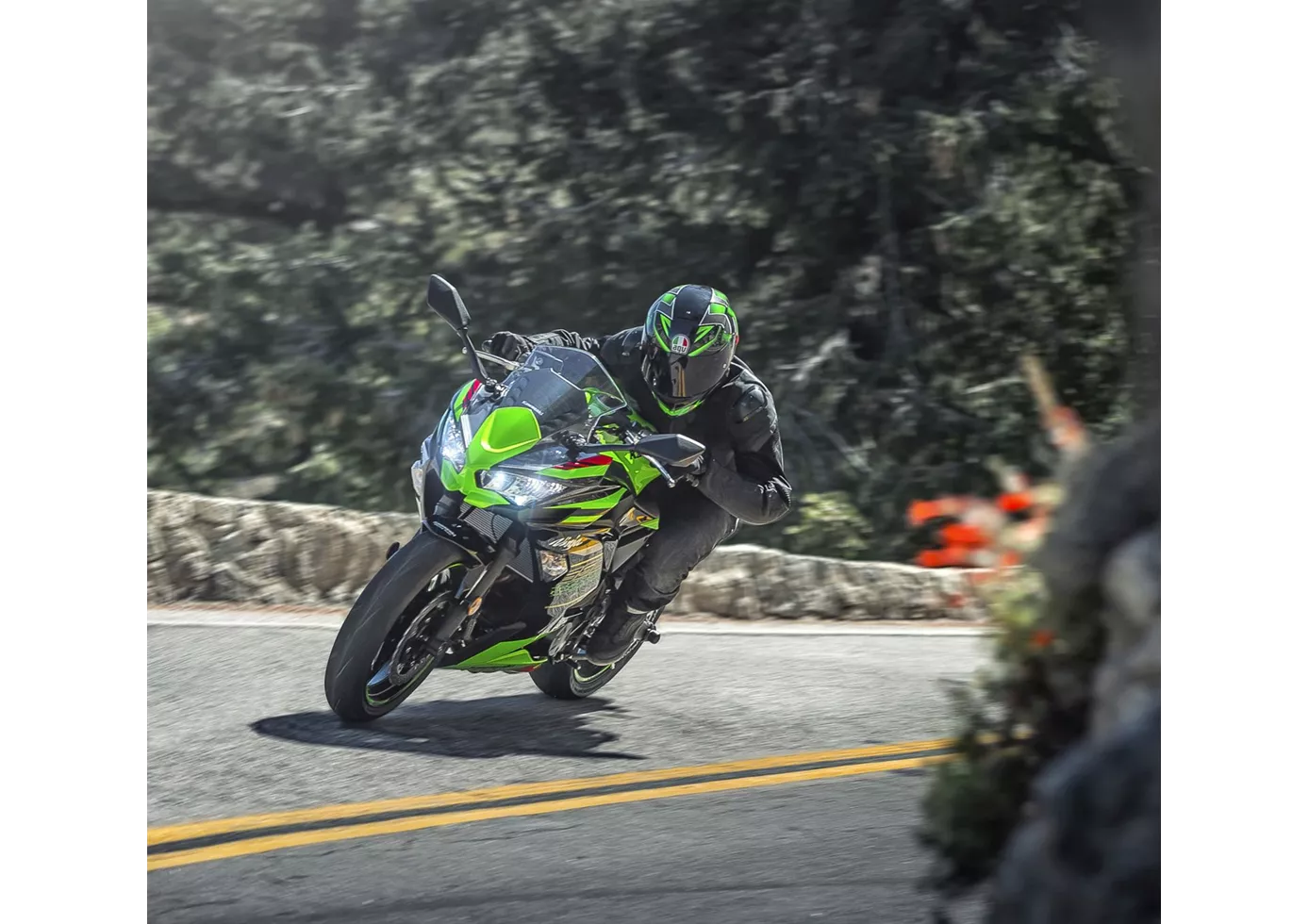
Sauvez les motos de tourisme sportif ! Kawasaki réalise avec la Ninja 650 une représentante exemplaire de cette catégorie et veille ainsi (espérons-le) à résoudre le problème de la relève. Le châssis stable et le bon bicylindre enthousiasment aussi bien les débutants que les pilotes confirmés, même à un rythme plus soutenu. Le frein avant a été un peu trop bien pensé : malgré une bonne puissance de freinage, il manque un point de pression transparent. Le plus est l'écran TFT, que nous ne trouvons pas encore chez la concurrence, ainsi que le look adulte qui s'oriente fortement vers les modèles Ninja plus grands.
Price Comparison Avarage Market Price Triumph Daytona 675 R vs Kawasaki Ninja 650
There are a few key differences between a Triumph Daytona 675 R 2013 and a Kawasaki Ninja 650 2020. It takes less time to sell a Triumph Daytona 675 R with 64 days compared to 75 days for a Kawasaki Ninja 650. Since model year 2011 1000PS.de editors have written 15 reviews for the Triumph Daytona 675 R and 20 reviews for the Kawasaki Ninja 650 since model year 2017. The first review for the Triumph Daytona 675 R was published on 11/1/2010 and now has more than 11,000 views. This compares to more than 79,600 views for the first review on Kawasaki Ninja 650 published on 10/4/2016.

